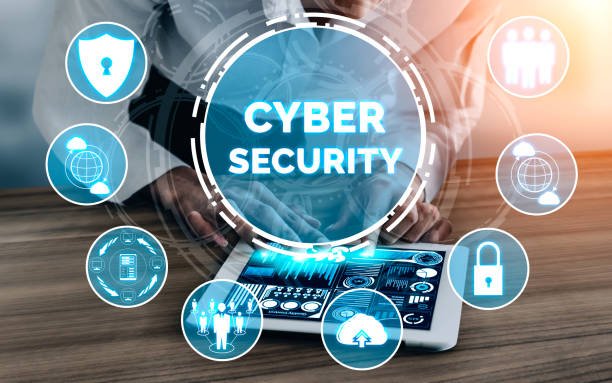8 blockchain security issues you are likely to encounter

The use of blockchain technology has become more widespread in recent years. Aside from its initial use in cryptocurrencies, it is today used in a variety of areas, including real estate, healthcare, smart contracts, and others.
The system gathers and saves data in “blocks,” which are collections of data that can each hold a certain amount of data. The term “blockchain” refers to an information chain formed when a block is full and connected to the preceding full block.
Consensus, decentralisation, and cryptography are the foundational ideas of blockchain, which confirms trust in business transactions. However, because of poor technological implementation, a number of blockchain security issues have emerged.
Public vs private blockchain security
Understanding the distinction between public and private blockchain security is essential before going on to discuss blockchain security in more detail. Blockchain networks can have a variety of implications in terms of involvement and data access abilities. As a result, blockchain networks can be classified into two categories: public networks and private networks.
In private blockchain networks, identity is utilised to verify membership and access credentials. Public blockchain networks are open and may allow any user to join while maintaining participant anonymity. Additionally, they will only cooperate with well-known firms.
Blockchain security issues and solutions
Many people who think blockchain technology is inherently secure are mistaken. Organizations can undoubtedly benefit from blockchain, but there are also some serious disadvantages due to specific security concerns.
The top eight blockchain security problems, along with their fixes, are listed below.
1. Sybil attack
Hackers create multiple false network nodes during a Sybil attack. The hacker will obtain majority consensus and sabotage the chain’s transactions using those nodes. A large-scale Sybil assault is therefore nothing more than a 51% attack.
In order to stop Sybil attacks:
- Use acceptable consensus algorithms.
- Keep an eye on the activity of other nodes and look for any that are just forwarding blocks from a single user.
These algorithms raise several obstacles, making it nearly impossible for hackers to carry out assaults, even though they may not completely prohibit these attacks.
2. Endpoint vulnerabilities
Another crucial security issue in relation to blockchain security is the vulnerability of blockchain endpoints.
Wherever consumers interact with the blockchain—on electronic devices like computers and smartphones—is where the blockchain network ends. Hackers will watch how users behave before targeting specific devices to take the user’s key. This may be among the most obvious blockchain security issues.
To avoid endpoint vulnerabilities
- Do not save blockchain keys on your laptop or mobile as text files.
- Transfer and install antivirus software packages for your electronic devices.
- Review the system often, keeping track of the time, location, and device access.
3. 51% attack
A 51% assault happens when one person or group (evil hackers) gathers about half the hash rate and takes over the entire system, which could be fatal. Hackers have the ability to change the order of transactions and prevent their confirmation. Even worse, they will undo already-completed transactions, resulting in double spending.
To stop 51% attacks:
- Ensure that the hash rate is higher.
- Improve your mining pool monitoring.
4. Phishing attacks
In a very phishing attack, the hacker wants to take the user’s login information. The owner of the wallet key will get emails that appear to be real. The user must enter their login information into a false hyperlink that is attached. A user may suffer harm as well as harm to the blockchain network if their login credentials or other sensitive information is compromised. They are also vulnerable to other attacks.
To stop phishing scams:
- Increase browser security by adding a reputable add-on or extension that alerts you to potentially dangerous websites.
- Increase device security by installing reputable antivirus software and malicious link detecting tools.
- In the event that you get an email asking for login information addressing the issue, confirm it with the support team or partner.
- Before clicking on any links, carefully read the content. Instead of clicking on the links, type the address into the private tab of your browser.
- Avoid open or public cafe’s Wi-Fi networks.
- Confirm your system and software is up to date.
5. Routing attacks
When a routing attack occurs, participants in the blockchain are frequently ignorant of the danger because data transmission and operations continue as usual. The risk is that these assaults frequently reveal sensitive information or steal money without the user’s knowledge.
In order to stop routing attacks:
- Use encryption.
- Implement secure routing protocols (with certificates).
- Change passwords regularly; use strong passwords.
- Educate yourself and your workers about the risks associated with information security.
6. Private keys
The primary key to your money is your private key or seed phrase. It may be simple for a hacker to guess your private key if it is weak. This implies that they might get hold of your money.
Private keys must be maintained a secret and robust enough to prevent easy guessing.
7. Scalability issues
Because blockchain technology is still in its infancy, quantifiability issues exist. This means that only a small number of transactions will be processed by the network at any given moment. You can utilise a variety of offline solutions (L2s) & side chains to prevent scaling problems.
8. Malicious nodes
The threat of rogue nodes is one of the additional security issues that blockchain technology is facing. Once a bad actor joins the network and tries to cause trouble, this will occur. They’ll attempt to do this by saturating the network with transactions or by attempting to undo legitimate transactions.
Conclusion
Although blockchain has numerous security flaws, cyber security experts are working hard to fix or lessen these issues. IT professionals are in a good position to deploy blockchain most safely and firmly if they have the necessary analytical and technical skills. But knowing about such assaults and how to prevent them is always a smart idea for protecting your valuables.





